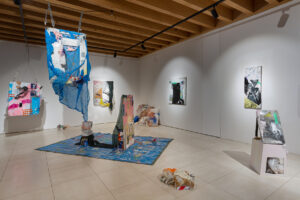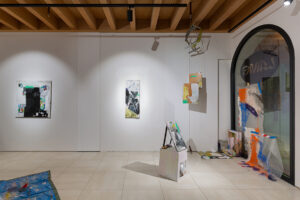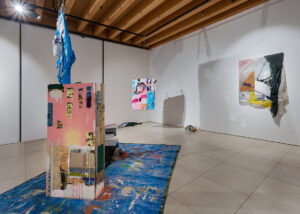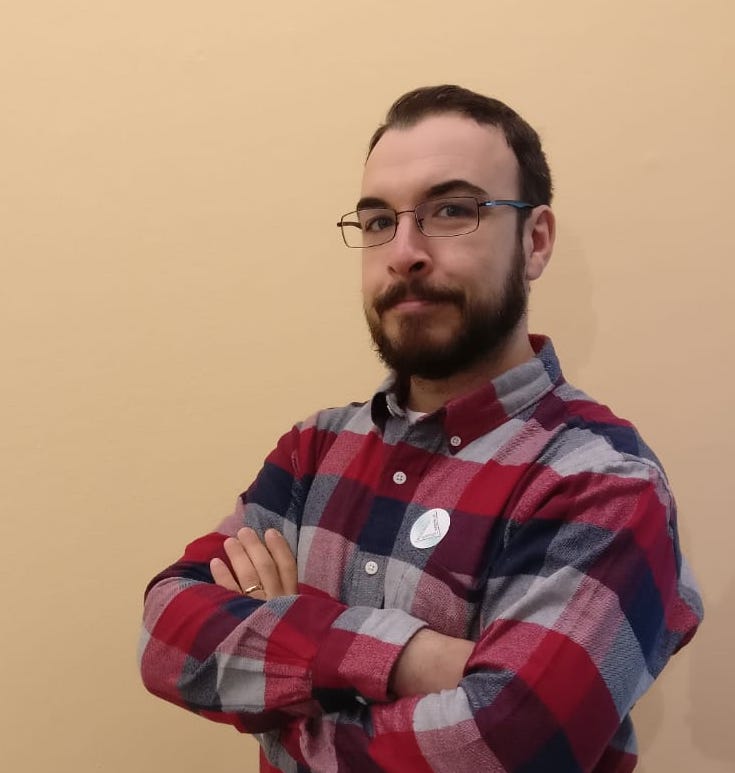I met Mattia Ozzy B. and I immediately realized that I didn’t have a traditional artist in front of me for the Italian scene, but an outsider with enormous potential. Mattia has several exhibitions at Italian and foreign institutions, and currently has a current staff of LAMB, in Venice. His artistic process consists of a mixture of manipulations of ready-made objects and the complicity of abstract painting strongly influenced by Graffiti Writing, with which he develops a personal language related to post-vandalism and involuntary art.
Francesco Liggieri: If you had to introduce yourself to those who do not know you with a work of art, which would you choose and why?
Mattia Ozzy B.: It’s a really complicated question because there are several works by contemporary artists that influence and inspire me all the time. One of the first works of art that comes to mind is the 2010 Untitled series by David Hammons, in which the American artist covers with industrial canvas several abstract paintings made on canvas. When, last year, I went to New York for the first time, I remember being struck by one of his works, which was on the second floor of MoMA. I was deeply struck by the violence of those black and red plastic sheeting in contrast to some slight hint of gestural painting that transpired from the tears. I’m sure it changed the way I saw painting. Fascinated by his subversive and multidisciplinary practice, I began to study his work and understood how he was able to combine politics, poetry and humor to analyze his own experiences, especially those related to contemporary African American culture. I am fascinated by his way of using found objects, such as snowballs or chicken bones, to undermine and question the current system of art.

Exhibition view. Ph Nicola Morittu. Courtesy of the artist
What do you think is the state of contemporary art?
I have approached the world of contemporary art recently thanks to various work experiences in galleries and institutions both in Italy and abroad. Lately I have been able to visit several exhibitions in foreign cities and, especially actively following projects, I noticed how contemporary art is active, interactive and constantly looking for new languages, but that are often spontaneous attempts and indicate strong positions. I have always been interested in foreign artistic movements, which I try to analyze and take as a reference because I appreciate how the practice of young artists is “free” but, at the same time, is recognized seriously, in a professional way. From my recent experiences in Europe it seemed to me that there is a greater interest on the part of the public for experimentation and especially listening to what an artist wants to express and realize. I think that even in Italy in recent years something more is moving but, surely because of many internal dynamics of the system, perhaps it is anchored to too traditional stereotypes on the figure of the artist and on what “must” be a work of art created in our country, all linked to a less dynamic and less enterprising modus operandi, such as to keep us one step behind the great European realities.

Mattia Ozzy B., What happens is inevitable, mix media on canvas 92 x 96,5 cm, 2018-2023, Ph Nicola Morittu Courtesy of the artist
How did the works for your solo show at LAMB in Venice come about?
The works for my first solo exhibition “WIP – Work In Process” are all the result of an itinerant research path that I started in 2018 in different urban contexts such as construction sites, slums, abandoned spaces, transit areas that I like to define as “non-places”, to quote the French anthropologist Marc Augé. After Leo De Luca proposed me the exhibition at LAMB, I developed the works in my studio in Milan, at the same time selecting the objects found to create a reciprocal and harmonious dialogue through a specific choice of colors, materials and shapes. So I “took care” of these objects by assembling, painting and modifying them by experimenting with different processes including combustion, fragmentation and improper use of cement, glues, resins, enamels and sprays. For this exhibition I decided to focus on the aspect of work in its making and therefore of the trial phase. In fact, as Arnold Braho, who wrote the critical text of the exhibition, observes, “Work In Process” takes precisely the value of statement of the exhibition (but also of my research more generally), both as an active part of the research field, and as a mode of action. My intent is to show all the works as “unfinished” within a policy of attention always in the making, given their precariousness in the setting and especially by their processing, that has continued until close to the inauguration and that can continue once the exhibition is over.

Exhibition view. Ph Nicola Morittu. Courtesy of the artist
As an artist, what do you think is your duty to society?
I believe that my duty towards society is primarily to create an expressive language that can arouse a form of visual interest and that can make me reflect on some of the problems of our society that I hold dear. Being particularly interested in the artistic process, I like to highlight materials and tools used for the construction of new buildings (be they residential, commercial or industrial) because only the latter are usually worthy of the judgment of the users, while what creates them remains in a limbo unknown to the most that, in this way, I try to tell and make judged through my intervention. Moreover, through the analysis of the urban context and the repetitive use of rejected objects and waste materials, I would like the public to reflect on the problems related to pollution and overproduction. Personally, I prefer to create new works by rehashing existing materials, without feeling the need to produce other objects that may one day become waste material. In urban and suburban spaces I find daily waste, waste and abandoned places that always give me new concrete possibilities to create works that can fascinate in their being crumbling and that, I hope, come to reflect the user on why I used these means to achieve them.

Exhibition view. Ph Nicola Morittu. Courtesy of the artist
David Hockney often remembers in his interviews that painting will never die. What do you think?
First of all, I would like to point out that I do not consider myself a painter but a multidisciplinary artist. Years ago, while I was studying painting at the Brera Academy of Fine Arts, I realized that what interested me most was analyzing and occupying the surrounding space, trying to appropriate a precise environment. Painting is one of the media that I use to study objects, movements and to connote my presence. I think that painting will live forever, through its expressive power that must be to renew itself and find new ways to manifest itself. Lately I try to paint with materials and objects such as sheets, scotch, glues, glasses, plastics, screws and other tools, using them improperly as if they were signs and color backgrounds. I believe that painting is more than a simple artistic technique: I think, in fact, that – together with drawing – it is the basis of the conception of the work of art in its primary structure. It is precisely through it that an artist can create an image even without using brushes and tubes of color. For me painting is to meditate, think and study how to arrange shades and gestures in a chosen space. I think painting dies whenever you think it can only exist on canvas, in fact limiting it. I think it will never die as long as it can be recognized in all things, both natural and artificial.
Francesco Liggieri
Info:
Mattia Ozzy B., WIP – Work In Process
18/03/2023 – 22/04/2023
LAMB, M9
Venice Mestre

Independent artist and curator. Founder of No Title Gallery in 2011. I observe, study, ask questions, take informations and live in contemporary art, a real stimulus for my research.






NO COMMENT